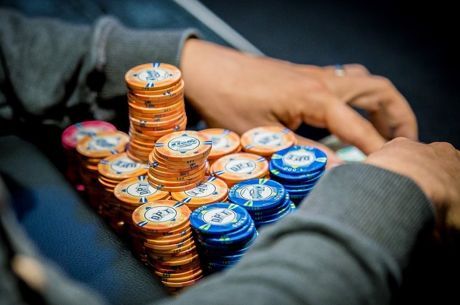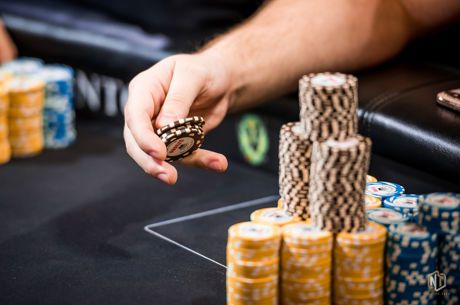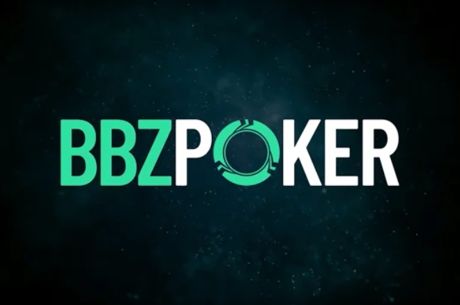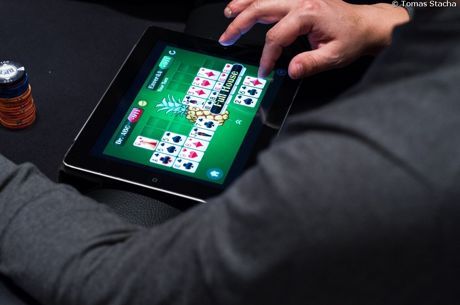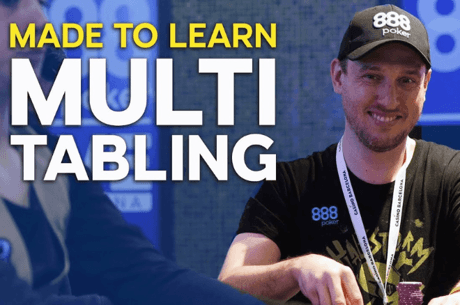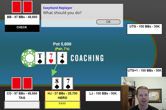How to Outplay Good Aggressive Poker Players From the Blinds
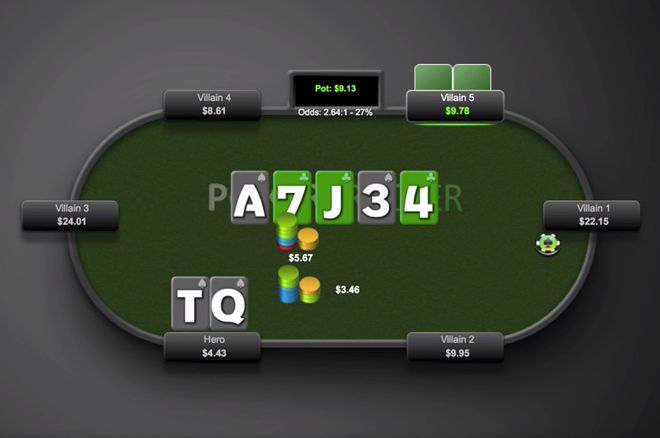
Playing from the blinds is hard enough at the best of times. This is because you have to act first on every single postflop street.
When you are up against strong regulars, playing from the blinds is even more difficult. In order to stay afloat in situations like this, you need to come up with some ways to take the pot away from them.
What this means in plain English is that you are going to need to run some pretty big bluffs against them at times. Which is fine. The key is simply picking your spots correctly.
This hand presents a perfect example of one of those situations. Take a look:
In this hand a good tight-aggressive regular raises from the cutoff in a $0.05/$0.10 six-handed online cash game. From a steal seat like this, I expect this player to be raising around the top 30 percent or even top 40 percent of all hands dealt to him. That means that he is going to have a very wide range that includes...
- almost any AxXx
- most KxXx hands
- all pocket pairs
- all Broadway hands (i.e., hands with two Broadway cards)
- almost any suited connector
- most suited one-gappers
I think you catch my drift. That's a lot of different hands! This means if we are in the blinds we should also be defending fairly widely, especially from the big blind.
In the "good old days" of online poker, it made sense just to three-bet like crazy here. I still do suggest this against a lot of the weaker regs in lower-stakes games today. This is because so many of them will either fold to a three-bet preflop or give up to a simple continuation bet on the flop.
But once you move up a level or two, most of the regs these days are a little bit more savvy. If you have a highly unbalanced three-betting range here, then they will adjust by either four-betting you wider or flatting you and then floating your flop c-bet.
So it is important that you flat-call preflop a lot more often these days in spots like this and look to outplay them after the flop. A hand like Q?10? as the player in the big blind has here is a perfect one with which to do just that.
We catch a pretty good flop with a gutshot straight draw to the nuts and a backdoor flush draw. These are the kinds of hands that I personally love to take a bluff line with. This is because these hands have plenty of backdoor equity to make a big hand. However, if my opponent fights back in a big way, it is also an easy throwaway hand. We only have queen-high after all!
In this hand we go ahead and check-raise the flop, which I like a lot. Then when the turn is the 3? giving us even more equity, it is mandatory that we keep applying the pressure, in my opinion.
The river also brings an excellent bluff card �� the 4? �� because it fills the main flush draw from the flop. We can definitely represent plenty of big draws that would play this hand the exact same way.
The final reason I like bluffing the river is because (of course) we still only have queen-high. Therefore, if we check it down, we are almost certain to lose.
What I hope you learn from this hand is that you need to find ways to outplay the aggressive good regulars even when you are out of position in the blinds. Taking a hand like this with several nice backdoor draws and playing it aggressively is a great way to go about that.
But you also need to adjust your bluffing strategy depending on the board runout. The board runout in this particular hand was favorable for us and so I like the decision to just triple-barrel this guy and force him to make a big-time call against us.
As you can see from the results in this hand, the bluff got through. This is exactly the kind of stuff you need to be working into your game from time to time, especially as you move up the stakes and start facing better players.
Do you ever run sophisticated multi-street bluffs like this against the good aggressive regulars? Let me know in the comments below, as well as any other thoughts you might have about this hand.
Nathan "BlackRain79" Williams is the author of the popular micro stakes strategy books Crushing the Microstakes, Modern Small Stakes, and The Microstakes Playbook. He also blogs regularly about all things related to the micros over at www.blackrain79.com.

